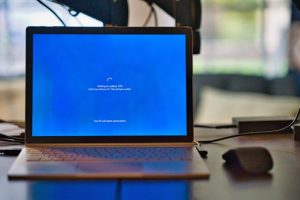It was a Tuesday night, and I was knee-deep in a Netflix binge when my laptop started acting possessed. The screen froze, pop-ups exploded like fireworks, and my files—years of photos, work docs, that novel I swore I’d finish—vanished into thin air. Panic set in. My trusty old Dell wasn’t just slow; it was under siege by a computer virus—a silent, sneaky predator that had slipped past my defenses. That nightmare taught me a brutal lesson: In the digital world, we’re all one wrong click away from chaos. But just like our bodies fight off colds with white blood cells, our devices have antivirus software—our knights in shining code—to battle these invisible invaders.
So, what’s a computer virus really? How does it worm its way in, and how do we fight back? I’ve been down this road (and lost some sleep over it), so let’s break it down together—step by step, no tech degree required.
What’s a Computer Virus? The Silent Saboteur
A computer virus is malware—malicious software with a mission to mess up your life. Think of it like a flu bug for your device: It sneaks in, spreads like wildfire, and wreaks havoc before you even know it’s there. Once it’s inside, the damage can hit hard:
- File Chaos: It can corrupt or delete your stuff—imagine losing every photo from that epic road trip.
- Data Theft: Passwords, credit card numbers—it’s a pickpocket’s dream.
- Sluggish Hell: My laptop once took five minutes to open a browser tab. Torture.
- System Meltdown: Worst case? It crashes your device into an unfixable brick.
Viruses don’t just materialize—they need an entry point. That sketchy email attachment promising “free concert tickets”? Yep, I clicked one once (spoiler: no tickets, just tears). Or those shady downloads from sites that scream “too good to be true”? Been there. Even a rogue website can unleash the beast. Here’s the lineup of usual suspects:
- Worms: Self-spreading terrors that don’t even need me to mess up—they just go.
- Trojans: Sneaky little liars posing as legit apps, only to stab me in the back.
- Ransomware: The worst—locks my files and demands cash. I’ve seen friends pay hundreds to no avail.
Antivirus Software: My Digital Shield
If viruses are the villains, antivirus software is my superhero—think Captain America, but for my hard drive. It’s built to spot, stop, and smash malware before it can ruin my day. After that Tuesday-night disaster, I swore I’d never go without it again.
Picture it as a tireless security guard patrolling my system. The second something fishy—like a Trojan disguised as a photo editor—tries to sneak in, my antivirus pounces, neutralizes it, and sends it to digital jail. Modern antivirus tools come loaded with goodies:
- Real-Time Scanning: It’s always watching, like a hawk over my files and downloads.
- Auto Updates: Keeps up with the latest villain tricks—I don’t have to lift a finger.
- Malware Cleanup: Roots out infections before they spread, saving my bacon.
- Firewall Muscle: Locks the back door so hackers can’t waltz in.
I’ve tried a few—Norton and McAfee are the premium heavyweights (pricey but tough), while Avast and Windows Defender hold their own for free. My current setup? Defender, because it’s baked into Windows and doesn’t nag me for cash, though I’ve flirted with upgrading for ransomware armor after hearing horror stories.
Why Antivirus Matters: The Stakes Are High
Here’s a mental image: I leave my apartment door wide open, lights on, valuables gleaming—then stroll away. That’s my laptop without antivirus. Cybercrooks don’t need an invite—they’ll swipe my identity, trash my files, or hold my data hostage faster than I can say “password123.” Without protection, I’m risking:
- Identity Theft: My bank login in the wrong hands? Shudder.
- Data Wipeout: Years of memories—poof. That novel draft still haunts me.
- Crawl Mode: Malware once turned my zippy machine into a digital slug.
- Wallet Drain: Ransomware payments or stolen funds—I’d rather burn cash than give it to thieves.
Antivirus isn’t just nice-to-have—it’s my lifeline. After losing those files, I spent days rebuilding what I could from backups (thankfully, I had some). Now, I sleep better knowing my guard’s on duty. But here’s the catch: It’s not a magic bullet—I’ve got to play defense too.
Staying Safe: My Hard-Earned Playbook
Even the best antivirus can’t save me if I’m reckless. That virus nightmare? My fault—I clicked a phishing email titled “URGENT: Account Issue” like a fool. Lesson learned. Here’s how I keep the bad guys out now:
- Pause Before Clicking: Unknown email attachments? Hard pass—I’ve been burned.
- Stick to the Good Stuff: Downloads only from legit sites or app stores—no more “free software” gambles.
- Update Everything: Old software’s a virus magnet. I patch my apps religiously now.
- Lock It Down: Strong passwords (no more “pizza123”) and two-factor authentication are my new BFFs.
- Backup, Backup, Backup: External drive, cloud—I’ve got copies galore. Losing files once was enough.
Last month, I dodged a bullet—a shady link in a group chat tempted me, but my gut (and antivirus) screamed “nope.” Crisis averted.
The Endless Fight: Final Thoughts
Viruses are the digital world’s boogeymen—silent, ruthless, and evolving daily. Antivirus software? It’s my sword and shield, cutting risks and giving me a fighting chance. That Tuesday meltdown was a wake-up call: In 2025, with cyberattacks slicker than ever, I can’t afford to slack. My device isn’t just a tool—it’s my photo album, my work hub, my window to the world. Letting a virus in is like handing a stranger my house keys.
So, I stay vigilant—antivirus humming, updates rolling, habits sharp. Prevention beats the cure every time. Next time you’re online, think of it as a battlefield: You’ve got the armor—use it, and don’t let the enemy through the gate. What’s your antivirus story? Saved by the bell or learned the hard way? Spill it below—I’m all ears!





